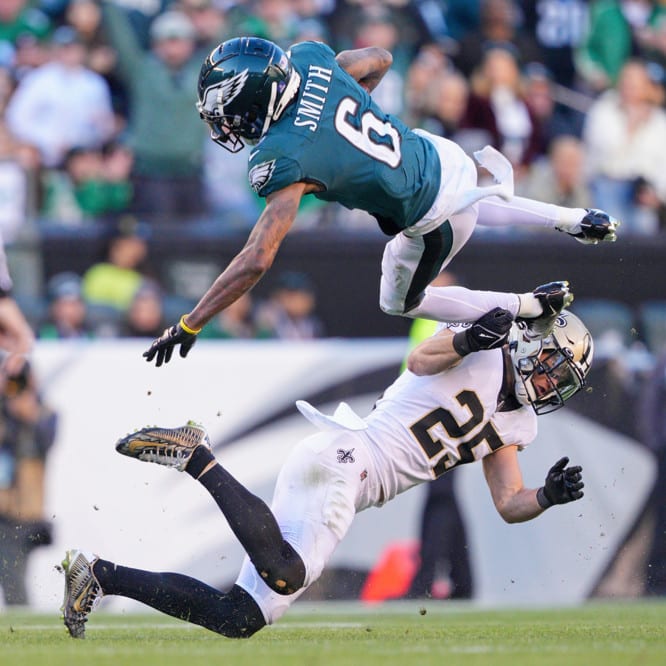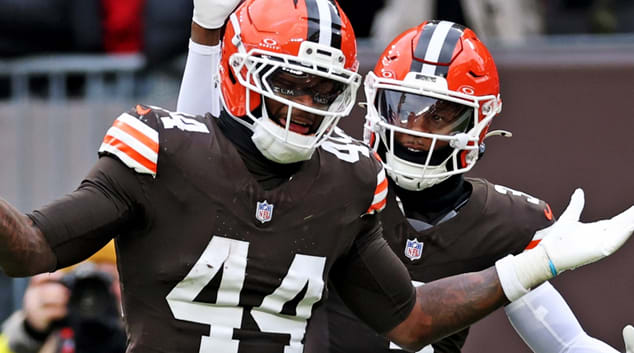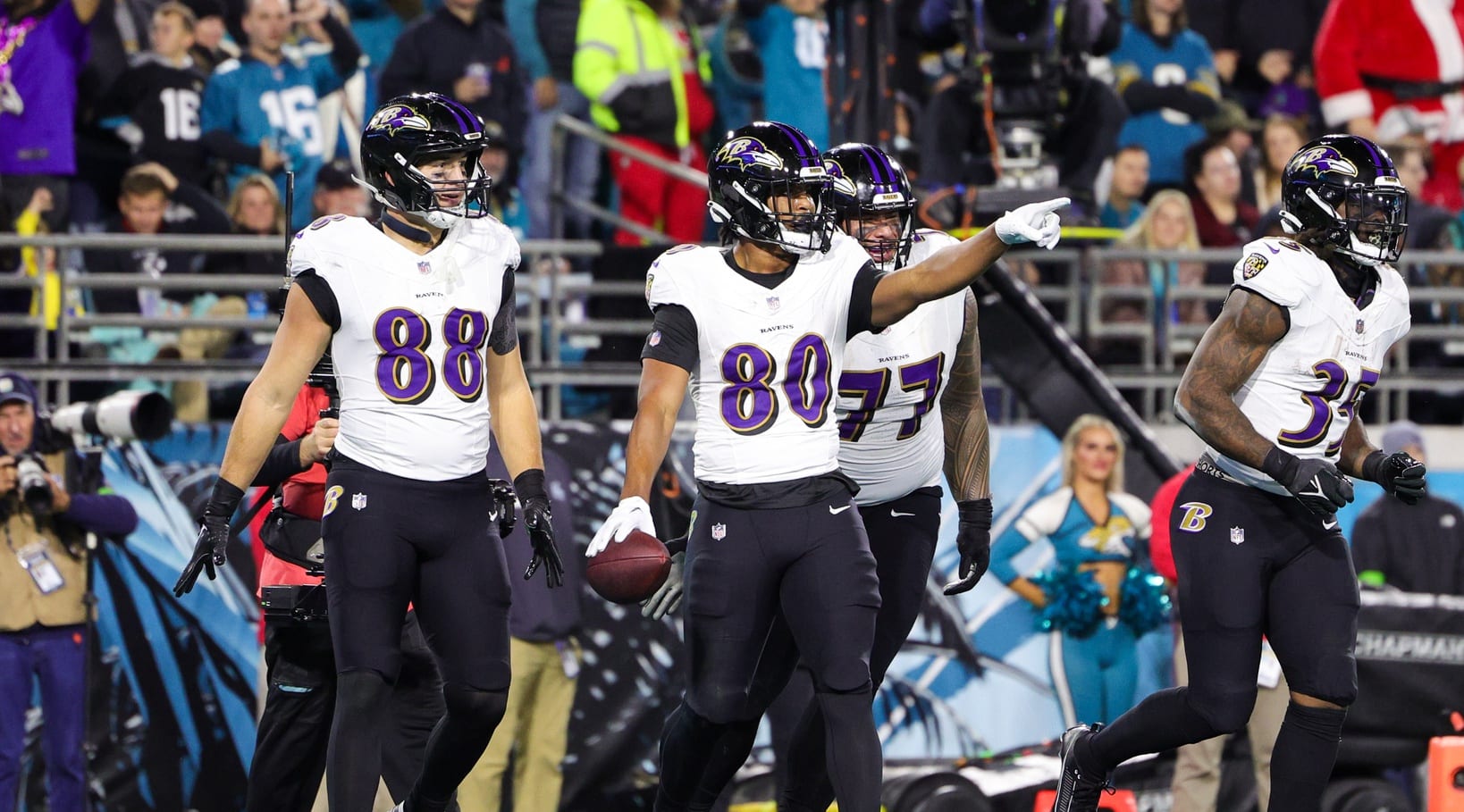Having now explored the nuances of playing NFL DFS on FanDuel and DraftKings, as well as some guidelines for picking different skill position players based on matchups, it's time to delve into the actual contests. For those new to NFL DFS, know that in the overwhelming majority of cases, contests can be divided into two major categories- cash games and GPPs (Guaranteed Prize Pools), also commonly referred to as tournaments.
Contests such as 50/50s, head-to-head matchups and multipliers (double-ups being the most common example) fall under the cash game umbrella, while contests with a variety of differently-sized fields that are guaranteed to run regardless of whether they fill or not, and where less than half of the participants win, usually get the GPP label.
While there are other niche formats that fall somewhere outside of these categories on some of the mid-sized and smaller sites around the industry, we'll be focusing on these two contest types over our next pair of NFL DFS 101 installments. In this piece, we'll focus on the strategic elements of building a successful cash game lineup for NFL DFS.
Cash Game Contest Types
A brief overview of each cash game type is in order before going further:
50/50s: As the name implies, these contests pay out exactly half the field. Payout is the same for all players finishing in cashing positions and typically includes a 20 percent "rake" (percentage of each entry fee taken by the site), so winners are paid slightly less than twice their entry fee.
Head-to-Heads: This is the contest type that would be most familiar to the overwhelming majority migrating over from season-long leagues. Simply put, you do battle with only one opponent and the lineup with the most points wins. One major difference from the season-long game: there is no snake draft that precedes a head-to-head. The entire player pool is available to both participants, so you and your opponent are likely to have some overlap in your lineups.
Multipliers (Double-Ups, Triple-Ups, Quadruple-Ups, etc.): Similar to 50/50s, except those finishing in cashing positions double (or triple or whatever other increment may apply) their money. Another key difference is that unlike 50/50s, less than half the field gets paid.
In Search of a Safe Floor
Now that we've elaborated a bit on each contest type, let's review the process of putting together a strong cash game lineup in daily fantasy football.
The central tenet of cash game strategy—that you aren't actually trying to build a lineup designed to maximize fantasy output—is on its face, almost counterintuitive. However, when one takes into account the format and prize payout structure, the reasoning becomes clearer.
As previously discussed, your payout is the same whether you finish first or in any other cashing position (in 50/50s, double-ups, etc.), and it's likewise already pre-set if you emerge the victor of your head-to-head matchup. There are no tiered payouts, no extra benefit to finishing, say, in the top-five. As a result, you're looking to minimize risk as much as possible and simply give yourself the best potential shot at finishing in the money.
Another way to describe this philosophy is that you're seeking to have a lineup with a high "floor" in cash games, with not as much concern for its "ceiling." For the sake of clarification, the floor for each player is the minimal amount of fantasy production you'd expect from him that given week, and the ceiling would be how much of a potential fantasy haul that player offers if he has an optimal game.
Cash Game Philosophy by Skill Position
How does all of this translate into a real-world, NFL DFS examples for each skill position?
Quarterbacks' performances tend to stabilize over the course of a season, and many of them constitute some of the safer cash game plays overall. The names are likely obvious, but for the sake of illustration, think Tom Brady, Drew Brees, Aaron Rodgers, Cam Newton and Ben Roethlisberger. Signal-callers such as Newton who can also eat up plenty of real estate with their legs in addition to their passing prowess provide a certain enhanced measure of safety.
As discussed in a prior installment, wide receivers are one of the most volatile positions week-to-week, making them one of the more interesting positions to evaluate from a cash game perspective. A such, let's take a moment to look at two examples from the same team to clarify the strategy behind selecting a solid cash game play at the position:
The Steelers' Antonio Brown shapes up as one of the most reliable targets in the entire league. Solid-to-spectacular fantasy production has been one of the few "sure things" in daily fantasy football over the last couple of seasons in particular, and his value is enhanced that much more on DraftKings, where a point is awarded for each reception.
Conversely, teammate Martavis Bryant (when not sidelined by suspensions!) serves as a prime example of a player who can be considered much more of an unknown week-to-week, at least up to this point in his career. Bryant certainly has the potential to deliver a performance of explosive proportions, but just the same, he can disappear some weeks.
Running backs can and should be viewed the same way, though their participation patterns are often more stable on a game-to-game basis. Your traditional bell-cow backs, few as they may be in today's NFL, certainly qualify as good cash game plays due to the number of touches they typically receive. Prime examples would be players like the Vikings' Adrian Peterson, the Steelers' Le'Veon Bell, the Bucs' Doug Martin and the Rams' Todd Gurley. Furthermore, when tailbacks are also featured heavily in the passing game, as is the case with Bell and Gurley, their safety level naturally goes up that much more.
Deciding on a solid cash game play at tight end can be a much more challenging proposition, as they also tend to have an appreciable amount of volatility over the course of a season. Some due diligence on target distribution is once again in order when determining a safe tight end play, as there are usually only a handful of teams that have tight ends who are just below the primary pass-catching target in an offense. Identifying such players (the Patriots' Rob Gronkowski serving as perhaps the best example) can be a key to cash game success in daily fantasy football.
As explained in previous installments on targeting players for the different skill positions, becoming familiar with factors such as target distribution and offensive schemes is an essential part of conducting daily fantasy football research. It can certainly help you land on which plays can be considered safer "cash game" plays and which are better suited to deploy in the contest type we'll delve into next time, GPPs.
The Vegas Factor
Two other pertinent factors to consider when building cash game lineups for NFL DFS are the defensive matchup and how Vegas views the game.
If you're looking for safety at running back, for example, you have to account for the quality of the defensive unit that the player will face that particular week. A particularly stalwart ground defense might serve as the tie-breaker when you're trying to decide between two typically solid cash game plays at tailback, as an example. The same could certainly apply when evaluating quarterbacks, receivers and tight ends with respect to the quality of pass defenses they're slated to face.
You can also glean some clues from projected Vegas point totals and point spreads when trying to compose a cash game lineup. A high projected team scoring total can certainly point you further in the direction of a quarterback or receiver you already feel can be a solid cash game play, while a lower-than-average projected number can perhaps encourage you to seek out another similarly safe option in what could be a more offense-friendly scenario.
Likewise, a small point spread can solidify that running back pick you might have in mind, as a tightly-contested game more than likely means heavy involvement for that player through all four quarters. On the other hand, a normally safe play whose team happens to be a large underdog that week may require you to look elsewhere, as that tailback may not get the usual amount of opportunities (particularly if they are not very involved in the passing game) due to their team falling behind by a significant margin.











































